Windows
Ways to Take Scrolling Screenshots on Windows 11
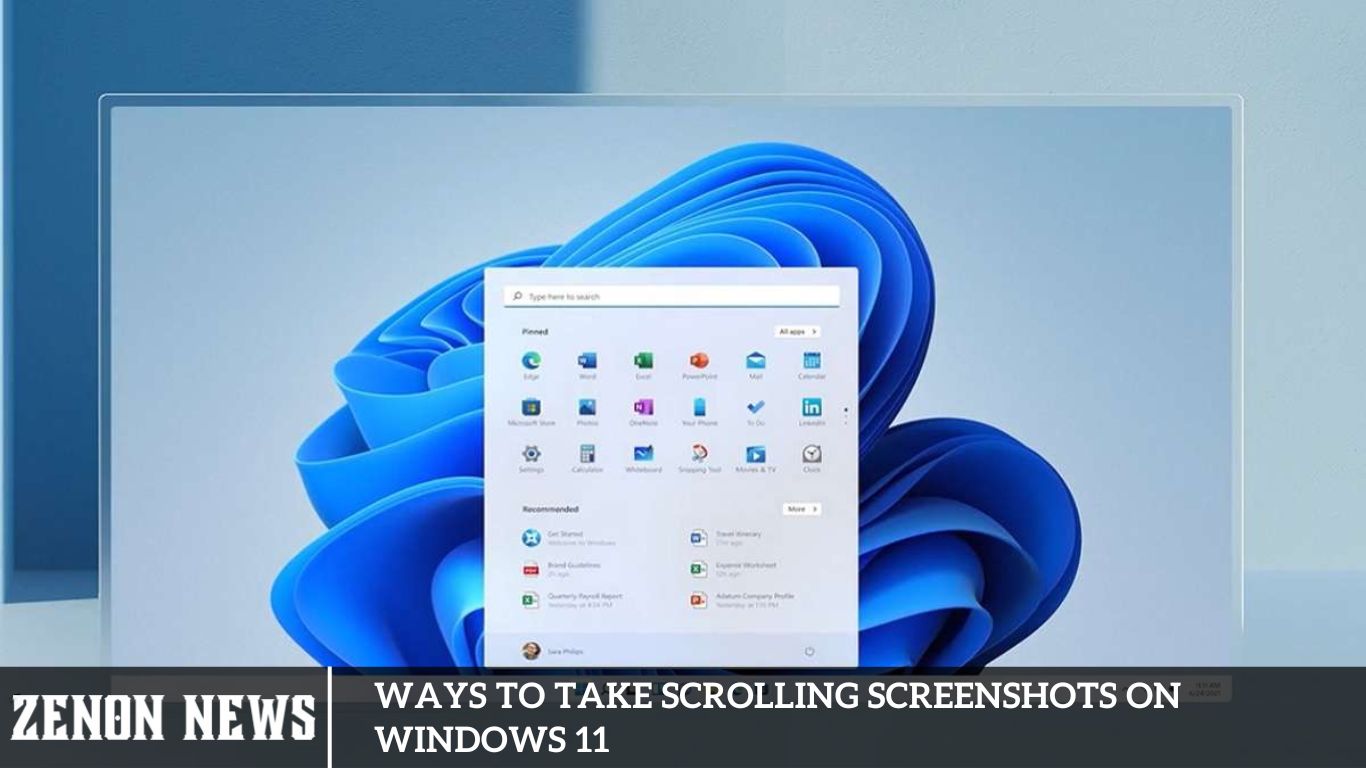
Occasionally, a webpage’s content is within the confines of a single screenshot, leading to the cumbersome task of capturing multiple images. Scrolling screenshots offer a solution by simplifying this process. But can you capture scrolling screenshots on Windows 11 using the snipping tool, or are alternative methods available? Today, we’ll delve into this topic in our blog, so keep reading until the end to discover the answer.
Capturing scrolling screenshots, especially on Windows 11, can be a convenient way to preserve entire web pages, documents, or other content that extends beyond the visible screen. While Windows 11 does not provide built-in functionality for capturing scrolling screenshots, numerous third-party applications and tools are available to accomplish this task efficiently. In this guide, we will explore various methods and software options that users can utilize to capture scrolling screenshots on Windows 11.
Capturing Scrolling Screenshots on Windows 11
Scrolling screenshots are adept at encapsulating entire web pages or lengthy chat threads within a single, elongated image, effectively sidestepping the need for multiple snapshots. Despite Windows 11 boasting commendable screenshot functionalities, a built-in shortcut for capturing scrolling screenshots still needs to be discovered. However, the void is filled by third-party applications that offer viable solutions. Let’s explore a few of them:
Use PicPick
PicPick stands out as a widely utilized screenshot software, offering an array of methods for capturing screenshots and various graphic tools to facilitate editing, such as Color Picker, Magnifier, CrossHair Color Palette, and more.
1: Begin by visiting the official PicPick website, then click on the “Download” button and follow the prompts to install the software.
2: Open the webpage or window you wish to capture a screenshot of once installed. Next, launch PicPick and select “Scrolling Window” from the options provided.
3: Within the PicPick toolbar, locate and click on the scrolling screenshot icon. Subsequently, click on any corner of the screen to initiate the process.
Drag the cursor to the opposite end of the desired area. Upon releasing the cursor, the page will commence scrolling automatically, capturing the content.
To conclude the screenshot, left-click on the screen again, halting the scrolling process and finalizing the capture.
Use SNAGIT
Snagit, another notable application renowned for its prowess in creating scrolling screenshots, secures its place among the top six contenders. Boasting a user-friendly interface and many editing options, it offers automatic and manual capture methods.
1: Commence by downloading and installing Snagit on your PC, following the instructions.
2: Open the webpage or content you intend to capture as a screenshot, then launch the Snagit application.
3: Within the left panel, opt for the “All-in-One” feature, and subsequently, select “Capture.”
4: Position the crosshair to the desired area, then begin scrolling. Once satisfied with the capture, click “Stop” to conclude the process.
Use Tweakshot
Here’s an alternative method for capturing scrolling screenshots on Windows 11: Tweakshot. Tweakshot stands out by providing a range of features, including image editing capabilities and various types of high-quality screenshots.
Begin by downloading and installing Tweakshot on your device.
Once installed, navigate to the page or window you wish to capture. Then, launch Tweakshot and locate the Capture Scrolling Window icon within the toolbar.
Click the Capture Scrolling Window icon, then select the entire page or window you want to capture. Click anywhere on the screen to initiate the process. Tweakshot will automatically commence capturing the scrolling screenshot and halt upon completion.
Use ShareX
Here’s an alternative method to capture scrolling screenshots using ShareX:
1: Start by downloading and installing ShareX on your system.
2: Once installed, navigate to the webpage or window you want to capture. Next, open ShareX and click “Capture” in the left panel. From the context menu, choose “Scrolling capture…”
3: In the “Capture” tab, locate and click on “Start scrolling capture” at the bottom. This will initiate the scrolling capture process, allowing you to seamlessly capture the entire webpage or window.
Use Screenpresso
Another viable option for capturing scrolling screenshots is Screenpresso, known for its compact design and excellent scrolling screenshot functionality.
1: Begin by downloading and installing Screenpresso on your device.
2: Once installed, navigate to the webpage or window you wish to capture. Launch Screenpresso and access the scrolling screenshot feature.
3: Follow the intuitive steps within Screenpresso to initiate the scrolling capture process. It efficiently captures the entire content of the webpage or window, providing you with a seamless experience.
Is it Possible to Capture Scrolling Screenshots on Windows 10/11 Without Using Third-Party Software?
Regrettably, capturing scrolling screenshots directly in Windows 10/11 without third-party software is impossible. Nevertheless, alternative methods exist for capturing scrolling screenshots within web browsers like Chrome, Firefox, or Edge. These methods may involve utilizing Developer Mode or installing a browser extension tailored for this purpose.
Is it Possible to Capture Scrolling Screenshots on Windows 10/11 Using the Snipping Tool?
Indeed, the Snipping Tool available on Windows 10/11 does not offer the functionality to capture scrolling screenshots. Its primary purpose is to capture screenshots of predetermined areas on the screen rather than entire scrolling content.
How to Capture a Scrolling Screenshot on Mac
On Mac, capturing a scrolling screenshot is facilitated by the built-in tools.
Please note: The steps provided in this guide are specific to MacOS Monterey 12.7.2. The process may vary depending on your MacOS version.
Begin by navigating to the webpage or content you wish to capture.
Press the Command + Shift + 5 keys simultaneously, then click on the camera icon that appears.
Scroll through the content until you reach the end of the page.
Once you’ve scrolled to the desired position, press Command + Shift + 5 again.
Click on the stop icon located in the toolbar to conclude the scrolling screenshot capture process.
Frequently Ask Questions
Can I take scrolling screenshots on Windows 11 without using third-party software?
Unfortunately, Windows 11 does not natively support capturing scrolling screenshots. However, there are third-party applications available that can enable this functionality.
Which third-party software can I use to capture scrolling screenshots on Windows 11?
Several third-party applications you can use, such as ShareX, Tweakshot, and Screenpresso, offer features for capturing scrolling screenshots on Windows 11.
How do I capture scrolling screenshots using ShareX on Windows 11?
To capture scrolling screenshots using ShareX, you need to download and install the ShareX application. Then, open the webpage or window you want to capture, launch ShareX, and select the scrolling capture option from the menu.
What are the steps for capturing scrolling screenshots with Tweakshot on Windows 11?
To capture scrolling screenshots with Tweakshot, download and install the Tweakshot app. Then, open the desired webpage or window, launch Tweakshot, and select the scrolling capture option from the toolbar.
Can I use Screenpresso to capture scrolling screenshots on Windows 11?
Yes, Screenpresso is another option for capturing scrolling screenshots on Windows 11. Download and install Screenpresso, open the webpage or window you want to capture and follow the instructions in the application to initiate the scrolling capture process.
Are there any browser extensions available for capturing scrolling screenshots on Windows 11?
Some browser extensions, such as Fireshot and Full Page Screen Capture, can capture scrolling screenshots directly within web browsers like Chrome, Firefox, or Edge on Windows 11.
Conclusion
While Windows 11 does not inherently offer native support for capturing scrolling screenshots, several effective third-party solutions are available. Applications like ShareX, Tweakshot, and Screenpresso provide users with efficient tools for capturing scrolling content on Windows 11.
Additionally, browser extensions such as Fireshot and Full Page Screen Capture offer convenient options for capturing scrolling screenshots directly within web browsers. Although the built-in Snipping Tool does not support this functionality, users can rely on these alternative methods to capture comprehensive screenshots of scrolling content on Windows 11, catering to various preferences and needs.
Windows
Fix Sleep Option Missing in Windows 10 [How to Restore]
![Fix Sleep Option Missing in Windows 10 [How to Restore]](https://zenonnews.com/wp-content/uploads/2024/05/Fix-Sleep-Option-Missing-in-Windows-10-How-to-Restore.jpg)
Just as humans require rest, so too does your PC. Windows offers three distinct options for powering down: sleep, hibernate, and shut down, each serving a specific purpose in allowing your computer to rest and conserve energy.
However, at times, users may encounter the inconvenience of the sleep option being missing from the Power menu. This can be particularly problematic for laptop users who rely on the sleep mode’s convenience and power-saving benefits.
What’s Behind the Missing Sleep Option in Windows 10?
If the sleep mode becomes deactivated due to power setting errors or display driver issues, it may vanish from the power menu.
Random bugs or viruses infiltrating your system are the primary culprits for sleep mode deactivation. Similarly, system bugs or viruses can corrupt power settings, resulting in the loss of the sleep option on your computer.
Regarding the display driver, deactivation occurs when the driver is not updated. Many users opt to keep Windows updates turned off, yet prolonged deactivation can impair driver functionality, leading to the disappearance of the sleep mode option.
Resolving the Absence of the Sleep Option in Windows 10
Now that the causes of this issue have been identified, it’s imperative to implement corrective measures. Below are six effective methods to rectify the error and restore the sleep option in the power menu of Windows 10:
Running the Power Troubleshooter
Windows 10 includes a built-in Power Troubleshooter tool that can help identify and fix issues with the sleep option. Here’s how to run the Power Troubleshooter:
- Go to “Settings” and select “Update & Security.”
- Click on “Troubleshoot” and then choose “Additional troubleshooters.”
- Scroll down and select “Power,” then click “Run the troubleshooter.”
- Follow the prompts to allow the troubleshooter to scan for and fix any issues.
Sleep Option Disappeared
On my Windows 10 laptop, I noticed that the sleep option had disappeared from the start menu. To resolve this issue, I searched online for potential solutions. However, I found that the sleep option needed to be seen upon exploring the Control Panel and the Settings menu. It was unavailable in Settings under System > Power and Sleep, nor in Control Panel under Hardware and Sound > Power Options > Choose what the power button does > Change Settings currently unavailable.
Despite delving into these settings deeply, the only options I encountered were to shut down and hibernate. The sleep option vanished entirely. I would greatly appreciate any assistance or advice on resolving this issue.
Utilize the Control Panel
Here’s a method to enable the sleep option via the control panel:
- Click on the search icon, type “Control Panel,” and press Enter.
- Choose “System and Security.”
- Navigate to “Power Options.”
- From the left pane, select “Choose what the power buttons do.”
- Click on “Change settings that are currently unavailable.”
- Ensure the “Sleep” box is checked and click “Save changes.”
- The sleep option should now be restored in the power menu. If it isn’t, you can try the
- following method. Additionally, you can refer to our latest guide on resolving PC sleep issues
- in Windows 11.
Note: To quickly access Power Options, open Run, type “powercfg. cpl,” and press OK.
Completing Windows Updates
Updating your Windows 10 device to the latest version can often resolve issues with the sleep option. To check for and install Windows updates, follow these steps:
- Go to “Settings” and select “Update & Security.”
- Click on “Windows Update” and choose “Check for updates.”
- Install any available updates and restart your device if prompted.
- After the update, check whether the sleep option has been restored.
Utilizing Command Prompt
Sleep mode may sometimes become inaccessible due to a power scheme misconfiguration. However, you can restore the power scheme to its default settings using the Prompt command. Once the power scheme is reset, sleep mode will reappear in the power menu.
Here’s how to restore the sleep mode using Command Prompt:
- Open the Windows search bar, type “Command Prompt,” then select “Run as administrator.”
- Type or copy-paste the following command into Command Prompt and press Enter.
- Wait for the process to complete.
- Type “exit” to close the Command Prompt.
For those interested in scheduling their PC’s sleep time, refer to our separate post on setting a schedule for Windows 11 to wake from sleep automatically.
Activate the Sleep Option Through the Control Panel
Windows 10 might have automatically turned off the sleep option on certain PCs based on driver availability or system configuration. To address the issue of the missing sleep option, your initial step should involve reviewing the configuration of your power options within the control panel.
Utilize the Local Group Policy Editor
Another method to activate sleep mode involves using the Local Group Policy Editor, which seamlessly applies to users of Windows 10 Pro and Windows 10 Enterprise. Group Policy isn’t readily available in the Windows 10 Home edition.
However, for Windows 10 Home users, enabling Group Policy is feasible. To do so, open Notepad, paste the provided code, save the file with any name in .bat format, and then run it as an administrator. Allow time for the procedure to complete, and after restarting your PC, Group Policy will be accessible. Encountering issues with Notepad? Troubleshooting tips can be found for resolving any saving matters.
Once Group Policy is activated, let’s proceed to enable sleep mode.
Here’s how to enable sleep mode via the Local Group Policy Editor:
- Press Windows + R to launch Run.
- Type “gpedit. msc” and click OK.
- Navigate through the following path from the left pane:
- Computer Configuration > Administrative Templates > Windows Components > File Explorer.
- In the right pane, locate the “Show sleep in the power options menu” policy.
- Right-click on the policy and select Edit.
- Choose either Enabled or Not Configured.
- Click Apply and OK.
- Restart your PC, and the power menu should restore the sleep option.
If, after restarting, the sleep mode isn’t visible in the power menu, you’ll need to revisit the Group Policy Editor and adjust the sleep settings. Follow these steps:
- Launch the Local Group Policy Editor.
- Click on Computer Configuration from the left pane.
- Select Administrative Templates.
- Click on System.
- Expand Power Management.
- Select Sleep Settings.
- In the right pane, find “Allow standby states (S1-S3) when sleeping (plugged-in).”
- Right-click on it and choose Edit.
- Choose either Not Configured or Enabled.
- Click Save Changes.
The sleep mode should now be available in the power menu. Explore how to quickly create a sleep timer in Windows 11 for further insights.
Missing Sleep Option in Windows 10
Sleep mode, also known as Suspend or Standby mode, is an energy-efficient state in which your PC consumes minimal Power. This power-saving feature allows your PC to enter a low-power state while remaining operational for quick reactivation when needed. It’s important to note that during Sleep mode, the PC doesn’t shut down entirely but instead enters a dormant state.
Execute the Power Troubleshooter
If the methods above fail to resolve the issue, troubleshooting the power settings is recommended. Windows 10 provides built-in troubleshooters to assist in identifying and resolving power-related problems efficiently.
Here’s how to fix sleep mode using the Windows Power Troubleshooter:
- Click on the Start icon and choose Settings.
- Select Update & Security.
- Navigate to Troubleshoot.
- Click on Additional Troubleshooters.
- Please scroll down and locate Power, then click on it.
- Select Run the troubleshooter.
- The troubleshooting process will commence, scanning and automatically fixing any identified problems.
- Once the troubleshooting is complete, the sleep option should reappear in the power menu.
For further troubleshooting guides, consider visiting our recent article addressing PC issues that won’t boot to BIOS.
Update the Display Adapter Driver
Suppose the sleep option on the Power menu remains unavailable or grayed out. In that case, updating the driver for your display adapter is advisable, as outdated drivers can contribute to this issue.
Here’s the process to resolve sleep mode by updating the display adapter driver:
- Right-click on the Windows icon.
- Select Device Manager.
- Expand Display Adapters.
- Right-click on the display driver and select Update driver.
- Choose the option to Search automatically for drivers.
- Follow the on-screen instructions to complete the update procedure.
- After restarting your computer, check the power options to confirm whether sleep mode is available. Additionally, explore some of the best methods to address issues with Windows 11 not waking from sleep.
Finish Windows Updates
Sometimes, random bugs may cause the sleep option to disappear or gray out. Installing new Windows updates can effectively eliminate these bugs and restore the sleep option.
Here are the steps to update Windows:
- Navigate to Settings.
- Click on Update & Security.
- Select Windows Update.
- Choose Check for updates.
- Install all remaining updates. After completing the update, reboot your PC. The sleep mode will reappear on the power menu. For guidance on addressing error 0x80d02002 or error 0x80240023 during Windows updates, refer to our troubleshooting guide.
Frequently Asked Question
Why is the sleep option missing in Windows 10?
The sleep option might be missing for various reasons, such as misconfigurations, outdated drivers, bugs, or issues with Windows updates.
How can I restore the sleep option in Windows 10?
You can restore the sleep option in Windows 10 by trying several methods, such as using the Control Panel, Local Group Policy Editor, updating display adapter drivers, running the Power Troubleshooter, or completing Windows updates.
What should I do if the sleep option is grayed out?
If the sleep option is grayed out, you can troubleshoot the issue by updating display adapter drivers, running the Power Troubleshooter, or completing Windows updates.
How do I update display adapter drivers in Windows 10?
To update display adapter drivers in Windows 10, right-click on the Windows icon, select Device Manager, expand Display Adapters, right-click on the display driver, choose Update driver, and follow the on-screen instructions.
How do I run the Power Troubleshooter in Windows 10?
To run the Power Troubleshooter in Windows 10, go to Settings, select Update & Security, choose Troubleshoot, click on Additional troubleshooters, scroll down and select Power, and then click on Run the troubleshooter.
Why is it essential to complete Windows updates?
Completing Windows updates is vital as they often include bug fixes, security patches, and improvements, which can address issues like the missing sleep option and enhance your system’s overall performance and stability.
Conclusion
Restoring the missing sleep option in Windows 10 involves a series of troubleshooting steps that address various potential causes, including misconfigurations, outdated drivers, bugs, or issues with Windows updates. By following methods such as using the Control Panel, Local Group Policy Editor, updating display adapter drivers, running the Power Troubleshooter, or completing Windows updates, users can successfully restore the sleep option and ensure optimal functionality of their systems. Additionally, it’s essential to keep the system up-to-date with the latest Windows updates to benefit from bug fixes, security patches, and performance improvements. With these steps, users can effectively resolve the issue of the missing sleep option and maintain a smooth operating experience on their Windows 10 devices.
Windows
Fix Keyboard Not Working in Windows 10 [Tested Methods]
![Fix Keyboard Not Working in Windows 10 [Tested Methods]](https://zenonnews.com/wp-content/uploads/2024/05/Fix-Keyboard-Not-Working-in-Windows-10-Tested-Methods.jpg)
The Keyboard serves as a medium through which our thoughts are translated into words, akin to a piano expressing melodies. However, when it ceases to function, creativity pauses momentarily, and the symphony of typing falls silent. Yet, fret not, as reliable solutions exist to rectify keyboard malfunctions in Windows 10, which I shall delineate in this article. So, let us embark on this journey of troubleshooting.
Where our keyboards serve as the gateway to our digital endeavors, encountering a malfunctioning keyboard can be a frustrating setback. Whether it’s a sudden cessation of typing response or keys failing to register, such issues disrupt workflow and hinder productivity. However, fear not, for in this comprehensive guide, we unveil a collection of tried-and-tested methods to resolve the problem of a non-responsive keyboard in Windows 10.
Resolving the Keyboard Not Working Problem in Windows 10: Step-by-Step Solutions
Users can address the keyboard issue through several troubleshooting steps, including running the keyboard troubleshooter, turning off filter keys and fast startup, and adjusting power management and Bluetooth settings. Additionally, ensuring the Keyboard’s physical condition and battery status can help resolve the problem.
The following guide outlines methods to resolve the issue of the Keyboard not working. However, some techniques may require a functioning keyboard for navigation and search.
You can utilize the on-screen Keyboard to facilitate navigation without a functional keyboard. Follow these steps to enable it:
- Click on the Start menu and navigate to Settings.
- Select Ease of Access.
- Choose Keyboard from the options on the left pane.
- Enable the “Use the On-Screen Keyboard” option.
Once the on-screen Keyboard is enabled, proceed to implement the following methods to troubleshoot and resolve the keyboard malfunction in Windows 10:
Altering the Keyboard Layout
Exploring a more straightforward solution is wise before delving into complex hardware and software configurations. Often, changing the keyboard layout can swiftly resolve the issue at hand. To do so, simultaneously press the Windows key and the Spacebar. Repeat this action several times to determine if it resolves your keyboard problem.
Inspect USB Ports
Confirm that the USB port is securely plugged into your PC. If the connection feels loose, disconnect the USB and reinsert it securely.
Certain keyboards are designed to function optimally with USB 3.0 ports. Plugging them into USB 2.0 ports may result in data transfer delays and operational issues.
Windows 10 Keyboard Issues Resolved
Over the past fortnight, I encountered persistent issues with my computer setup. My newly acquired USB keyboard exhibited intermittent disconnection problems despite initial functionality. Attempts to rectify the issue via driver installation proved ineffective. Subsequently, the Keyboard ceased functioning altogether, prompting a switch to a previous non-USB keyboard, albeit one plagued by faulty keys. Surprisingly, this alternative input device performed reliably without connectivity issues until an unfortunate water spill rendered it inoperative. After a brief hiatus, I employed an antiquated yet functional USB keyboard. While this peripheral displayed signs of power upon connection, as evidenced by the illuminated num lock key, it abruptly ceased functioning upon reaching the login screen, failing to register any input commands—a sequence of events previously unencountered.
Assess for Physical Damage
If your Keyboard exhibits any physical damage, such as a faulty wire, damaged USB port, or malfunctioning buttons, you’ll inevitably encounter operational issues.
Examine your Keyboard closely for any signs of physical damage to the body or wire. If damage is detected, consider replacing the Keyboard. Alternatively, if your Keyboard is under warranty, seek assistance from customer care for resolution.
Assess Battery Status
Wireless keyboards offer the advantage of reduced wire clutter, relying instead on battery power for operation.
Should the battery be low on power or damaged, it can hinder the Keyboard’s ability to establish a reliable connection with the computer. Thus, replacing the battery with a new one is essential to rectify the issue.
The Importance of Resolving Keyboard Issues:
A functional keyboard is essential for performing various tasks on your computer, including typing documents, browsing the internet, and interacting with applications. Addressing keyboard malfunctions promptly is crucial for maintaining productivity and avoiding disruptions in your workflow.
Laptop Keyboard Dysfunction in Windows 10/11
Windows 10/11 is widely lauded for its array of highlighted features; however, it’s not without its flaws, as numerous issues persist. A notable concern voiced by many users is the malfunctioning of their keyboards within the Windows 10/11 environment.
This dilemma becomes particularly significant when the Keyboard ceases to function on a laptop, where replacement is more complex than a desktop counterpart. The inability to utilize the Keyboard renders the PC effectively unusable.
The question, “Why is my keyboard not working?” is a common refrain. Several factors could contribute to this issue, including faulty hardware drivers, incorrect regional settings, poor connections, or accumulated dirt and dust. In the ensuing section, we’ll investigate how to rectify this predicament.
Verify Bluetooth Keyboard Driver Configuration
Wireless keyboards rely on Bluetooth technology to seamlessly transmit data to the computer. However, an improperly configured Bluetooth setup can prevent the Keyboard from establishing a connection.
If your Keyboard fails to register keystrokes, consider following these steps to adjust the Bluetooth keyboard driver settings:
- Access the Control Panel.
- Right-click on your Keyboard.
- Navigate to the Services tab.
- Enable “Drivers for keyboard, mice, etc (HID).”
- Click Apply and then OK.
- Restart your PC.
Upon restarting, the computer will save the adjustments made to the Bluetooth settings. If Bluetooth fails to activate, utilize the fix Bluetooth connections shortcut to reconnect your wireless Keyboard.
Tested Methods to Fix Keyboard Not Working in Windows 10:
Now, let’s explore a series of tested methods to resolve the keyboard malfunction issue in Windows 10. These methods have been meticulously researched and verified to provide effective solutions.
Turn Off Filter Keys
The Filter Keys feature adjusts keyboard repeat rates. It ignores repeated keystrokes, which can hinder typing, particularly when entering information swiftly during account login sessions on web browsers like Google Chrome.
Fortunately, you can disable Filter Keys to resolve the issue of the Keyboard not working. Follow these steps to disable Filter Keys:
- Click the Start button and go to Settings.
- Select Ease of Access.
- Scroll down and click on Keyboard in the left pane.
- Turn off the “Use Filter Keys” option.
By following these instructions, you’ll be able to type quickly and efficiently without the hindrance of Filter Keys.
Upgrade the Keyboard Driver
Outdated or corrupted keyboard drivers can lead to various issues. Updating the driver is crucial to rectifying bugs and glitches and ensuring optimal keyboard functionality.
To update the keyboard driver, follow these steps:
- Right-click on the Start menu and access Device Manager.
- Expand the Keyboard section.
- Right-click on the listed keyboard device.
- Select Update driver.
- Choose the “Search automatically for updated driver software” option.
- The system will download and install the latest driver for your Keyboard.
- After installation, restart your PC to apply the changes and verify the Keyboard functions correctly.
Pre-installing drivers from the Windows Store can be advantageous for users employing multiple keyboards and seeking to streamline the updating process.
Utilize Keyboard Troubleshooter
When confronted with an issue you can’t pinpoint, running the keyboard troubleshooter is a reliable method to diagnose the problem.
If you encounter keyboard problems, the troubleshooter can assist in resolving the issue of the Keyboard not working, even within the BIOS.
Follow these steps to run the keyboard troubleshooter:
- Click on Start and navigate to Settings.
- Select Update & Security.
- Go to Troubleshoot and click on Additional Troubleshooters.
- Scroll down and select Keyboard.
- Click on Run the troubleshooter.
The troubleshooter will identify any problems with your Keyboard, providing instructions to help you resolve the issue.
Customize Your Keyboard Settings
Filter Keys exist within Windows, designed to manage inadvertently repeated keystrokes. Regrettably, enabling this setting has been associated with instances where certain keyboards cease functioning in Windows 10. It’s imperative to verify whether Filter Keys is activated. If it is enabled, disabling it may resolve the issue at hand.
Turn Off Fast Startup
While the fast startup feature is designed to expedite your computer’s boot-up process, it can sometimes lead to issues with connected devices, causing them to malfunction.
Although fast startup isn’t inherently problematic, many users recommend keeping it disabled to avoid potential issues.
Follow these steps to turn off the fast startup option:
- Click on the Start menu and access Control Panel.
- Navigate to Hardware and Sound.
- Click on Power Options.
- Select “Choose what the power buttons do” from the left pane.
- Click on “Change settings that are currently unavailable.”
- Uncheck the “Turn on fast startup” option.
- Press “Save changes.”
- Restart your computer to apply the changes and verify the Keyboard functions correctly.
Adjust Power Management Settings
By default, computers may deactivate USB-connected devices to conserve power during low battery situations or when operating in power-saving modes. However, it’s crucial to configure power management settings for USB keyboards to maintain continuous keyboard connectivity, even during low-power scenarios.
Follow these steps to adjust power management settings:
- Right-click on the Start menu and select Device Manager.
- Expand the Universal Serial Bus controllers option.
- Double-click on USB Root Hub or Generic USB Hub.
- Navigate to the Power Management tab.
- Uncheck the box next to “Allow the computer to turn off this device to save power.”
- Click OK to save the changes.
- Restart your device and verify if the Keyboard is functioning correctly.
The methods outlined above have resolved the keyboard issue. However, if none of the solutions worked and you’re considering purchasing a new keyboard, explore the best Aura Sync keyboards available for your computer.
If you’re interested in understanding the underlying causes of the issue, continue reading the following passage for detailed insights.
Understanding the Causes of Keyboard Dysfunction in Windows 10
Various factors contribute to keyboard malfunctions in Windows 10. Corrupted or damaged drivers, internal and external physical damage, and a deteriorating battery condition are among the primary culprits. Additionally, features such as Filter Keys, Fast Startup options, and incorrect power management settings can disrupt the connection and render the Keyboard non-functional.
Delve deeper into the following passage to understand these underlying reasons comprehensively. Below are the key factors behind the keyboard malfunction in Windows 10:
Assessing Physical Harm
The functionality of your Keyboard can be compromised if there is any physical damage to its components, such as the Keyboard itself, its wire, or the USB port it’s connected to. Moreover, internal or external damage to your PC may also contribute to the keyboard malfunction.
Depleted Battery Life
When the battery life of a wireless keyboard diminishes, it can lead to operational issues. Prolonged use of the same battery without replacement is a common cause of Keyboard malfunction.
Activated Filter Keys
Filter Keys, while intended to address repetitive keystrokes and typing speed, can pose challenges when typing quickly or pressing keys repeatedly.
Driver Malfunction
Bugs and errors in the keyboard driver can compromise keyboard functionality. Furthermore, problems may arise from Windows updates or a corrupted driver, exacerbating keyboard issues.
Active Fast Startup
While Fast Startup expedites computer boot-up times, it can adversely affect other hardware connections, potentially leading to issues.
If you’ve enabled Fast Startup for your PC, you may be experiencing problems with the keyboard connection.
Inaccurate Power Management
Enabling power-saving features or operating in low battery or power saver mode can cause your USB keyboard to disconnect to conserve battery life. Adjusting power management settings and utilizing power saver mode may cause the Keyboard to lose connection and cease functioning.
Having absorbed the information above, I trust you now have a clearer understanding of the issue and will find it beneficial during troubleshooting.
Frequently Asked Question
Why is my Keyboard not working in Windows 10?
Common reasons include corrupted or outdated drivers, physical damage to the Keyboard or its connections, low battery life (for wireless keyboards), enabled Filter Keys or Fast Startup, and incorrect power management settings.
How can I troubleshoot my Keyboard in Windows 10?
You can start by running the keyboard troubleshooter, checking physical connections, ensuring battery life (for wireless keyboards), updating or reinstalling keyboard drivers, disabling Filter Keys or Fast Startup, adjusting power management settings, and inspecting for physical damage.
What should I do if my Keyboard stops responding suddenly?
First, try restarting your computer to see if it resolves the issue. If not, check physical connections and battery life (for wireless keyboards), and try the above troubleshooting steps.
Why is my wireless Keyboard not connecting to my computer?
This could be due to low battery life, improper pairing, or interference. Ensure the Keyboard is adequately connected or paired with your computer, replace the batteries if needed, and try removing any potential sources of interference.
How do I update my keyboard drivers in Windows 10?
You can update keyboard drivers through Device Manager. Right-click on the Start menu, select Device Manager, expand the Keyboards section, right-click on your keyboard device, and choose Update driver. Select “Search automatically for updated driver software” and follow the on-screen instructions.
Why does my keyboard work in some applications but not others?
This could be due to compatibility issues or settings specific to those applications. Try troubleshooting by testing the Keyboard in different applications and checking for any application-specific keyboard settings.
Conclusion
Resolving keyboard issues in Windows 10 is essential for maintaining productivity and smooth operation. Through a series of tested methods, including troubleshooting, adjusting settings, and updating drivers, users can effectively address problems such as unresponsiveness, connectivity issues, and malfunctioning keys. By following the steps outlined in this guide and leveraging the diverse solutions provided, users can overcome keyboard-related challenges and ensure seamless functionality in their Windows 10 environment. Remember to check for physical damage, battery status (for wireless keyboards), and configuration settings like Filter Keys, Fast Startup, and power management. With diligence and the application of proven methods, users can troubleshoot and resolve keyboard issues, enabling them to work efficiently and hassle-free on their Windows 10 systems.
Windows
Reinstall Bluetooth Drivers in Windows 10 [Within Minutes]
![Reinstall Bluetooth Drivers in Windows 10 [Within Minutes]](https://zenonnews.com/wp-content/uploads/2024/05/Reinstall-Bluetooth-Drivers-in-Windows-10-Within-Minutes.jpg)
Transitioning from the entanglement of wires to the freedom of wireless connectivity is captivating. Bluetooth technology further streamlines this transition, facilitating seamless communication between devices.
In contemporary times, most electronic devices leverage wireless technology, notably Bluetooth, to establish connections with computers. Despite its prevalence, Bluetooth drivers can encounter challenges in various circumstances, leading to performance issues. In such instances, reinstalling the driver is a reliable solution to rectify these issues.
To effectively address Bluetooth driver-related issues, it is imperative to follow the reinstallment process thoroughly. Let us delve into the steps required to reinstall Bluetooth drivers, ensuring optimal functionality and connectivity. Stay tuned for a comprehensive guide through this process. Let’s commence!
Guide to Correctly Reinstalling Bluetooth Drivers in Windows 10
The optimal method for reinstating and resolving Bluetooth driver issues involves utilizing the Device Manager to uninstall and reinstall existing drivers. This process can be accomplished by downloading the driver file from the Manufacturer’s website or using the Windows Update feature.
Reinstalling Bluetooth drivers offers a comprehensive solution to various issues encountered on Windows 11.
To effectively reinstall Bluetooth drivers, following a series of steps is essential. Below, you will find detailed methods outlining the procedure:
Utilize Device Manager to uninstall current Bluetooth drivers.
Reinstall the drivers by downloading them from the Manufacturer’s website or utilizing Windows Update.
Following these steps meticulously ensures a successful reinstallation of Bluetooth drivers, resolving associated issues effectively.
Utilize Device Manager for Reinstallation
Device Manager allows users to access comprehensive management of all computer hardware components, including Bluetooth functionality. The Device Manager program facilitates the seamless reinstallation of Bluetooth drivers, ensuring optimal performance.
However, before reinstalling, it is imperative to uninstall the existing drivers. Follow the subsequent instructions meticulously to execute the uninstallation process effectively:
- Press the Windows + X keys on your keyboard and select Device Manager.
- Expand the Bluetooth category by clicking on the arrow icon.
- Right-click on the Bluetooth adapter and choose Uninstall device.
- It would help if you marked the “Delete the driver software for this device” checkbox and click Uninstall.
The outlined procedures effectively remove the Bluetooth drivers from your system. To complete the removal process, restart your device, which will thoroughly eliminate the Bluetooth driver files. Subsequently, you must reinstall the driver to enable access to Bluetooth devices.
Ordinarily, Windows 10 automatically installs any missing drivers post-reboot, including Bluetooth drivers. It is essential to ensure that your computer maintains a functional internet connection to facilitate the automatic installation process.
For users operating on Windows 11 who are encountering issues with turning Bluetooth functionality on or off, refer to the guide on how to manage Bluetooth settings on a Windows 11 computer.
Reinstalling Bluetooth Drivers on Windows 11/10
The most up-to-date version of the Windows Bluetooth driver is typically automatically installed upon restarting your computer. However, for optimal results, it’s highly recommended to manually download the Bluetooth driver from either your laptop manufacturer’s website or the Bluetooth manufacturer’s website and then proceed with manual installation onto your device.
For instance, if you’re seeking to install a Bluetooth driver for your Dell laptop, you can initiate a search for the Dell Bluetooth driver using your preferred web browser and navigate to the official Dell website. From there, you can narrow your search by utilizing identifiers such as your Dell Service Tag, Dell EMC Product ID, or Model. Following this, you can select the appropriate driver for download and proceed with the installation onto your computer.
Reinstallation via Windows Update
Updating Windows to the latest version can automatically install any missing drivers, including Bluetooth drivers. To reinstall Bluetooth drivers using Windows Update, follow these instructions:
- Click on the Start menu and select the gear icon to open Settings.
- Navigate to Update & Security > Windows Update.
- Click “View optional updates” below the “Check for updates” button.
- Expand the “Driver updates” section.
- Tick the checkbox next to the Bluetooth driver and click “Download and install.”
- These steps will promptly download and install the latest available Bluetooth driver on your computer.
Explore our recent article addressing issues where the Bluetooth toggle icon may go missing for further insights.
Execute Bluetooth Troubleshooter
To address unresolved Bluetooth driver issues, utilizing the Windows troubleshooter can be instrumental in identifying and resolving underlying problems. Follow the outlined procedure below to initiate the Windows Bluetooth Troubleshooter:
- Click on the Start menu and access Settings.
- Navigate to Update & Security > Troubleshoot.
- Locate and click on “Additional troubleshooters.”
- Under “Find and fix other problems,” click on Bluetooth.
- Select “Run the troubleshooter.”
The Windows troubleshooter will commence scanning for potential issues. If any problems are detected, the troubleshooter will automatically initiate the resolution process.
If the Bluetooth driver problem persists despite troubleshooting efforts, consider employing a USB Bluetooth transmitter as an alternative solution for connecting with Bluetooth devices.
For further assistance, refer to our guide on how to enable auto-login in Windows 10.
Identifying Common Bluetooth Connectivity Issues
Delving into prevalent Bluetooth problems encountered by users on Windows 11/10
Issues including pairing failures, intermittent connections, and device recognition issues
Understanding how outdated or corrupted Bluetooth drivers can exacerbate these issues
Utilize the Manufacturer’s Website
When Windows fails to automatically reinstall Bluetooth drivers, downloading the installation from the Manufacturer’s website proves to be a reliable solution. Every computer manufacturer maintains an official support website housing all essential drivers for seamless system operation.
For instance, if you own an HP laptop without Bluetooth drivers, visiting the Official HP website enables you to obtain the most compatible drivers tailored for your laptop model.
The process remains consistent across various brands. Locate your product manufacturer’s website and download the appropriate driver. Once the correct driver is obtained, installation can commence without delay.
Additionally, leveraging the Manufacturer’s tool presents an efficient avenue for installing the latest Bluetooth drivers. Such tools are designed to streamline the process by automatically identifying and installing the most suitable drivers for your computer, ensuring optimal performance.
Reasons for Reinstalling Bluetooth Drivers on Windows 10
The necessity to reinstall Bluetooth drivers on Windows 10 arises, particularly when encountering driver corruption or obsolescence due to malware intrusion. Moreover, an outdated Windows system or missing system files can also prompt the need for Bluetooth driver reinstallation.
Bluetooth drivers are susceptible to corruption, often stemming from alterations in driver files or connections with compromised devices.
Failing to regularly update drivers can result in obsolescence, leading to connectivity complications. Therefore, it is crucial to maintain a routine driver update schedule to mitigate such issues.
An outdated Windows environment can impede optimal performance, burdened by obsolete and redundant files. This can hinder Bluetooth drivers from operating seamlessly, contributing to connectivity challenges.
Hence, prompt system updates are imperative whenever device updates are available, ensuring preemptive measures against unforeseen disruptions.
Windows Update Integration
Leveraging the automated capabilities of Windows Update to reinstall Bluetooth drivers
Verifying that the system is configured to receive driver updates and ensuring optimal functionality
Assessing the advantages and limitations of relying on Windows Update for driver management
Frequently Asked Question
Why do I need to reinstall Bluetooth drivers in Windows 10?
Reinstalling Bluetooth drivers may become necessary due to driver corruption, malware interference, outdated Windows systems, or missing system files, all of which can affect Bluetooth connectivity.
How often should I update my device drivers to avoid issues?
It is advisable to update device drivers regularly to prevent obsolescence and mitigate connectivity problems. Aim for a routine update schedule to ensure optimal performance.
What can cause Bluetooth drivers to become corrupted?
Bluetooth drivers can become corrupted due to changes in driver files or connections with corrupted devices. These factors contribute to the instability of Bluetooth functionality.
How does an outdated Windows system impact Bluetooth drivers?
An outdated Windows system may contain obsolete and unnecessary files, hindering Bluetooth drivers from functioning seamlessly. This can result in connectivity issues and suboptimal performance.
Are there any tools available to assist with Bluetooth driver updates?
Yes, some manufacturer-provided tools can automate identifying and installing the most suitable Bluetooth drivers for your system. These tools streamline the update process and ensure compatibility.
Can I reinstall Bluetooth drivers manually without using a manufacturer’s tool?
Absolutely. You can reinstall Bluetooth drivers manually by accessing the Device Manager, uninstalling the current drivers, and then reinstalling them either from the Manufacturer’s website or through Windows Update.
Conclusion
Reinstalling Bluetooth drivers in Windows 10 is a straightforward process that can be completed within minutes. Whether prompted by driver corruption, malware interference, or outdated system components, reinstalling Bluetooth drivers can restore connectivity and ensure optimal performance.
Users can swiftly address Bluetooth-related issues by following simple steps such as accessing the Device Manager, uninstalling current drivers, and reinstalling them manually or through automated tools. Regular driver updates and system maintenance are crucial for preventing future connectivity complications.
-
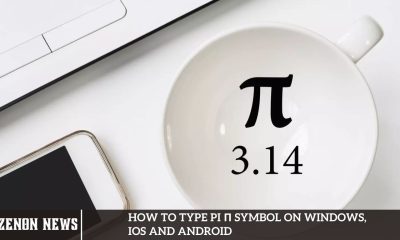
 Windows2 months ago
Windows2 months agoHow to Type pi π symbol on Windows, iOS and Android
-

 Social Media2 months ago
Social Media2 months agoHow to Use Facebook Marketplace Without an Account
-

 How To2 months ago
How To2 months agoHow to Activate USB Debugging on Android Devices
-
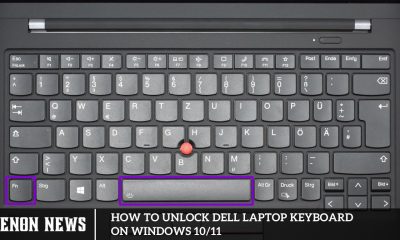
 Windows1 month ago
Windows1 month agoHow to Unlock Dell Laptop Keyboard on Windows 10/11
-

 Apps2 months ago
Apps2 months ago12 Best Free Video Editing Apps For Android (2022)
-
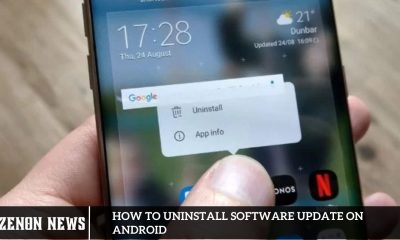
 How To1 month ago
How To1 month agoHow to Uninstall Software Update On Android
-

 How To1 month ago
How To1 month agoHow to Convert Picture to Text in Excel or Word
-
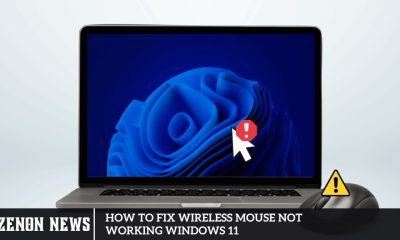
 Windows1 month ago
Windows1 month agoHow to Fix Wireless Mouse Not Working Windows 11








![How To Fix CPU Fan Not Spinning [Tested Methods]](https://zenonnews.com/wp-content/uploads/2024/05/How-To-Fix-CPU-Fan-Not-Spinning-Tested-Methods-80x80.jpg)
![How To Clear Browser’s Cache [PC And Phone]](https://zenonnews.com/wp-content/uploads/2024/05/How-To-Clear-Browsers-Cache-PC-And-Phone-80x80.jpg)


